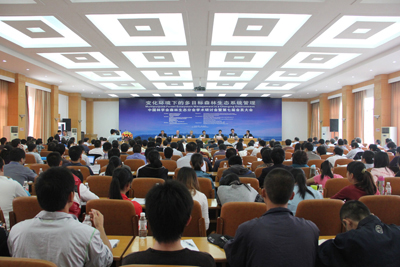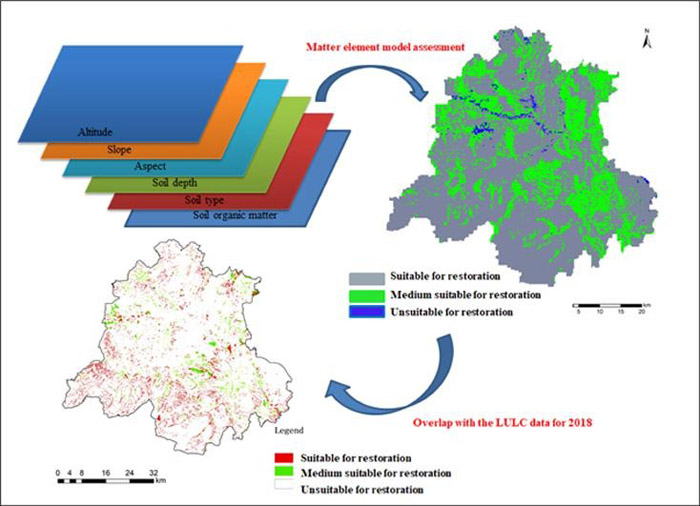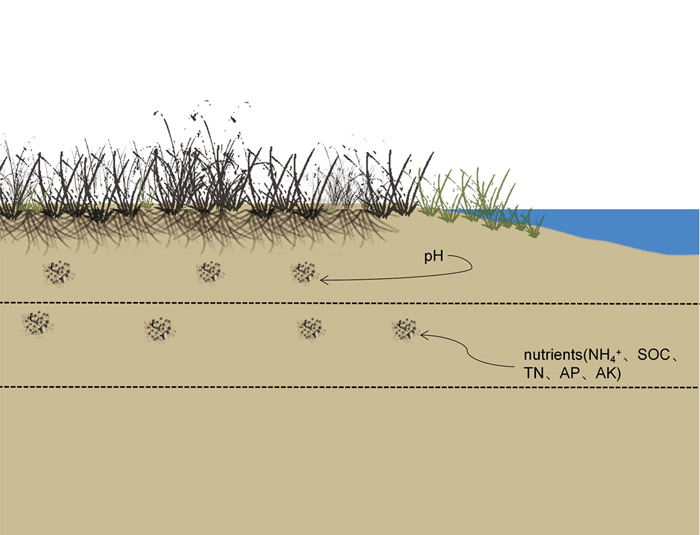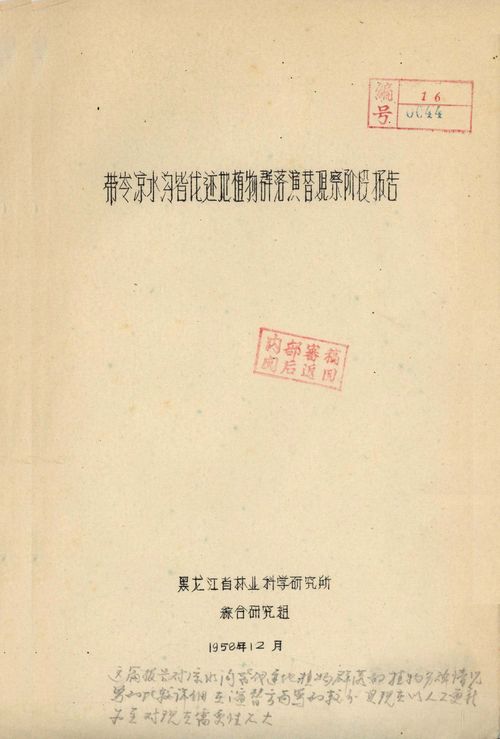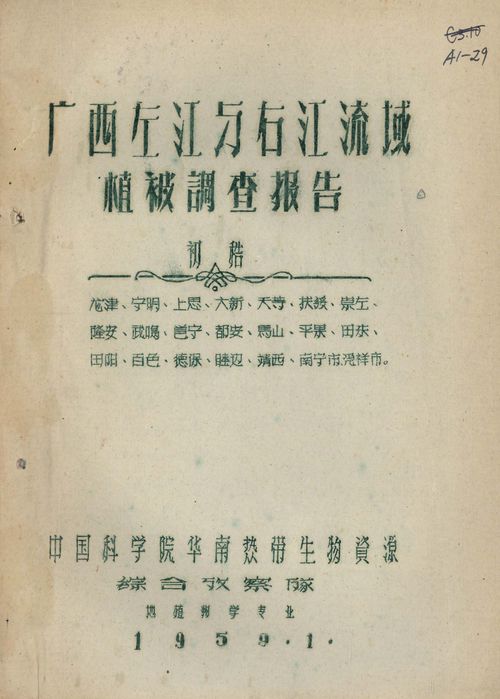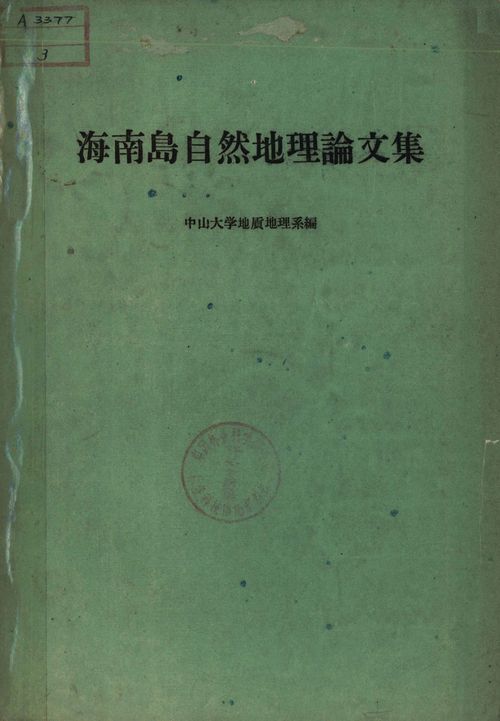
河岸带韧性植物群落研究综述
编号
lyqk007323


中文标题
河岸带韧性植物群落研究综述


作者单位
华南农业大学林学与风景园林学院, 广州 510642


期刊名称
世界林业研究


年份
2019


卷号
32


期号
1


栏目编号
1


栏目名称
专题论述


中文摘要
河岸带植物群落是河岸带生态系统的一个重要组成,具有多种美学价值、生态和经济效益。近年来,全球变化、极端天气事件频发以及人类活动等外界干扰威胁着河岸带植物群落的稳定,而韧性是有助于植物群落适应干扰的一个重要特性。因此,国际上已有众多的学者开展河岸带韧性植物群落的研究。文中在梳理国际上最新研究成果的基础上,阐明相关的重要概念,从适应能力、动态转变比对和阈值界定层面归纳河岸带植物群落韧性的评估测量指标与方法,从外来入侵植物、极端天气事件以及河流流态3个方面探讨外界干扰因素对植物群落韧性的影响,并针对韧性的内涵延伸、完善测量指标和方法以及外界干扰因素方面提出研究展望。


基金项目
广东省研究生教育创新计划项目(2017JGXM-MS09);广东省科技计划项目(2013B020302004)。


英文标题
A Review of Research on Resilience of Riparian Plant Community


作者英文名
Weng Enbin, Weng Shufei, Wang Xiaofan


单位英文名
College of Forestry and Landscape Architecture, South China Agricultural University, Guangzhou 510642, China


英文摘要
The riparian plant community, which contains various ecological, aesthetic, economic benefits, is a critical element of the riparian ecosystem. Recently, the global climate change, extreme weather events and human activities have been threatening the riparian plant community stability, while resilience as a significant characteristic can adapt the community to disturbances. Thus, more and more researchers have been engaged to the study of the resilience of riparian plant community. The paper reviewed the latest international researches in this field, explained several important concepts, and concluded the main indicators and methods to measure and assess the resilience in terms of adaptive capacity, regimes shift, and threshold determination. Then, we analyzed the effect of external disturbances on the resilience from the 3 aspects, i.e., exotic invasive plants, extreme weather events and the river flow regime. Finally, we prospected the future research on the resilience connotation, measurement indicators and methods improvement, and external disturbances.


英文关键词
riparian zone;ecosystem;plant community;plant resilience


起始页码
16


截止页码
21


投稿时间
2018/4/19


最后修改时间
2018/9/10


作者简介
翁恩彬(1993-),男,硕士生,研究方向为园林植物与城市绿化,E-mail:yydgi2@163.com。


通讯作者介绍
翁殊斐,女,副教授,研究方向为园林植物与城市绿化,E-mail:wengshufei@163.com。


E-mail
翁殊斐,女,副教授,研究方向为园林植物与城市绿化,E-mail:wengshufei@163.com。


分类号
S718.3


DOI
10.13348/j.cnki.sjlyyj.2018.0074.y


参考文献
[1] 张昶,王成,孙睿霖,等. 城市化地区河岸带植被特征及其与河岸硬度的关系:以晋江市为例[J]. 生态学报, 2016, 36(12):3703-3713.
[2] 廖先容,扈幸伟,邬龙. 城市河流滨岸缓冲带生态修复模式研究[J]. 水利水电技术, 2017, 48(10):109-112.
[3] SALO J A, THEOBALD D M. A multi-scale, hierarchical model to map riparian zones[J]. River Research & Applications, 2016, 32(8):1709-1720.
[4] CAPON S J, CHAMBERS L E, MAC NALLY R, et al. Riparian ecosystems in the 21st century:hotspots for climate change adaptation?[J]. Ecosystems, 2013, 16(3):359-381.
[5] BROTHERTON S J, JOYCE C B. Extreme climate events and wet grasslands:plant traits for ecological resilience[J]. Hydrobiologia, 2015, 750(1):229-243.
[6] NIMMO D G, HASLEM A, RADFORD J Q, et al. Riparian tree cover enhances the resistance and stability of woodland bird communities during an extreme climatic event[J]. Journal of Applied Ecology, 2016, 53(2):449-458.
[7] 王丽,雷少刚,卞正富. 多尺度矿区植被生态系统恢复力定量测度研究框架[J]. 干旱区资源与环境. 2017, 31(5):76-80.
[8] FU B, LI Y, WANG Y, et al. Evaluation of riparian condition of Songhua River by integration of remote sensing and field measurements[J]. Scientific Reports, 2017, 7(1):2565-2581.
[9] KEETON W S, COPELAND E M, SULLIVAN S M P, et al. Riparian forest structure and stream geomorphic condition:implications for flood resilience[J]. Canadian Journal of Forest Research, 2017, 47(4):476-487.
[10] HOLLING C S. Resilience and stability of ecological systems[J]. Annual Review of Ecology & Systematics, 1973, 4(4):1-23.
[11] FOLKE C, CARPENTER S, WALKER B, et al. Regime shifts, resilience, and biodiversity in ecosystem management[J]. Annual Review of Ecology Evolution & Systematics, 2004, 35(1):557-581.
[12] CHAMBERS J C, MAESTAS J D, PYKE D A, et al. Using resilience and resistance concepts to manage persistent threats to sagebrush ecosystems and greater sage-grouse[J]. Rangeland Ecology & Management, 2017, 70(2):149-164.
[13] WANG W X, VINOCUR B, ALTMAN A. Plant responses to drought, salinity and extreme temperatures:towards genetic engineering for stress tolerance[J]. Planta, 2003, 218(1):1-14.
[14] SHI L, WANG Y, JIA Y, et al. Vegetation cover dynamics and resilience to climatic and hydrological disturbances in seasonal floodplain:the effects of hydrological connectivity[J]. Frontiers in Plant Science, 2017.DOI:10.3389/fpls.2017.02196.
[15] VAN LOOY K, PIFFADY J. Metapopulation modelling of riparian tree species persistence in river networks under climate change[J]. Journal of Environmental Management, 2017, 202(2):437-446.
[16] BOURGEOIS B, BOUTIN C, VANASSE A, et al. Divergence between riparian seed banks and standing vegetation increases along successional trajectories[J]. Journal of Vegetation Science, 2017, 28(4):787-797.
[17] CAPON S J, REID M A. Vegetation resilience to mega-drought along a typical floodplain gradient of the southern Murray-Darling Basin, Australia[J]. Journal of Vegetation Science, 2016, 27(5):926-937.
[18] IPCC. Climate change 2014:impacts, adaptation, and vulnerability[M]. Cambridge:Cambridge University Press, 2014.
[19] POWELL E J, TYRRELL M C, MILLIKEN A, et al. A synthesis of thresholds for focal species along the US Atlantic and Gulf Coasts:a review of research and applications[J]. Ocean & Coastal Management, 2017, 148:75-88.
[20] STANDISH R J, HOBBS R J, MAYFIELD M M, et al. Resilience in ecology:abstraction, distraction, or where the action is?[J]. Biological Conservation, 2014, 177(9):43-51.
[21] BOURGEOIS B, VANASSE A, GONZALEZ E, et al. Threshold dynamics in plant succession after tree planting in agricultural riparian zones[J]. Journal of Applied Ecology, 2016, 53(6):1704-1713.
[22] BRUNO D, GUTIERREZ-CANOVAS C, VELASCO J, et al. Functional redundancy as a tool for bioassessment:a test using riparian vegetation[J]. Science of the Total Environment, 2016, 566:1268-1276.
[23] CATELOTTI K, KINGSFORD R T, BINO G, et al. Inundation requirements for persistence and recovery of river red gums (Eucalyptus camaldulensis) in semi-arid Australia[J]. Biological Conservation, 2015, 184:346-356.
[24] BESSON C K, LOBO-DO-VALE R, RODRIGUES M L, et al. Cork oak physiological responses to manipulated water availability in a Mediterranean woodland[J]. Agricultral & Forest Meteorology, 2014, 184(1):230-242.
[25] LOPEZ-MERINO L, SILVA SANCHEZ N, KAAL J, et al. Post-disturbance vegetation dynamics during the Late Pleistocene and the Holocene:an example from NW Iberia[J]. Global & Planetary Change, 2012, 92/93(4):58-70.
[26] LE MAITRE D C, GAERTNER M, MARCHANTE E, et al. Impacts of invasive Australian acacias:implications for management and restoration[J]. Diversity & Distributions, 2011, 17(5):1015-1029.
[27] CATFORD J A, JANSSON R. Drowned, buried and carried away:effects of plant traits on the distribution of native and alien species in riparian ecosystems[J]. New Phytologist, 2014, 204(1):19-36.
[28] GREET J, COUSENS R D, WEBB J A. Flow regulation affects temporal patterns of riverine plant seed dispersal:potential implications for plant recruitment[J]. Freshwater Biology, 2012, 57(12):2568-2579.
[29] DICKENS S J M, ALLEN E B. Exotic plant invasion alters chaparral ecosystem resistance and resilience pre-and post-wildfire[J]. Biological Invasions, 2014, 16(5):1119-1130.
[30] GIORIA M, JAROSIK V, PYSEK P. Impact of invasions by alien plants on soil seed bank communities:emerging patterns[J]. Perspectives in Plant Ecology,Evolution and Systematics, 2014, 16(3):132-142.
[31] RICHARDSON D M, HOLMES P M, ESLER K J, et al. Riparian vegetation:degradation, alien plant invasions, and restoration prospects[J]. Diversity & Distributions, 2007, 13(1):126-139.
[32] TERERAI F, GAERTNER M, JACOBS S M, et al. Resilience of invaded riparian landscapes:the potential role of soil-stored seed banks[J]. Environmental Management, 2015, 55(1):86-99.
[33] DALTON R L, CARPENTER D J, BOUTIN C, et al. Factors affecting soil seed banks of riparian communities in an agricultural ecosystem:potential for conservation of native plant diversity[J]. Applied Vegetation Science, 2017, 20(3):446-458.
[34] JAMES C, REID M, CAPON S. Climate change and the future of Australian riverine vegetation[M]. Melbourne:CSIRO Publishing, 2016:387-406.
[35] NILSSON C, BROWN R L, JANSSON R, et al. The role of hydrochory in structuring riparian and wetland vegetation[J]. Biological Reviews, 2010, 85(4):837-858.
[36] GREET J, COUSENS R D, WEBB J A. More exotic and fewer native plant species:riverine vegetation patterns associated with altered seasonal flow patterns[J]. River Research & Application, 2013, 29(6):686-706.
[37] OSUNKOYA O O, ALI S, THI N, et al. Soil seed bank dynamics in response to an extreme flood event in a riparian habitat[J]. Ecological Research, 2014, 29(6):1115-1129.
[38] KARLO T, SAJNA N. Biodiversity related understorey stability of small peri-urban forest after a 100-year recurrent flood[J]. Landscape & Urban Planning, 2017, 162:104-114.
[39] MERRITT D M, SCOTT M L, POFF N L, et al. Theory, methods and tools for determining environmental flows for riparian vegetation:riparian vegetation-flow response guilds[J]. Freshwater Biology, 2010, 55(1):206-225.
[40] BYWATER-REYES S, WILCOX A C, STELLA J C, et al. Flow and scour constraints on uprooting of pioneer woody seedlings[J]. Water Resource Research, 2015, 51(11):9190-9206.
[41] MERRITT D M, WOHL E E. Plant dispersal along rivers fragmented by dams[J]. River Research & Application, 2006, 22(1):1-26.
[42] SIANGA K, VAN TELGEN M, VROOMAN J, et al. Spatial refuges buffer landscapes against homogenisation and degradation by large herbivore populations and facilitate vegetation heterogeneity[J]. Koedoe, 2017, 59(2):1-13.
[43] TRUCHY A, ANGELER D G, SPONSELLER R A, et al. Chapter two-linking biodiversity, ecosystem functioning and services, and ecological resilience:towards an integrative framework for improved management[J]. Advances in Ecological Research, 2015, 53(1):55-96.
[44] OLIVER T H, HEARD M S, ISAAC N J B, et al. Biodiversity and resilience of ecosystem functions[J]. Trends in Ecology & Evolution, 2015, 30(11):673-684.
[45] TURNER M G. Disturbance and landscape dynamics in a changing world[J]. Ecology, 2010, 91(10):2833-2849.
[46] FLORES B M, FAGOAGA R, NELSON B W, et al. Repeated fires trap Amazonian blackwater floodplains in an open vegetation state[J]. Journal of Applied Ecology, 2016, 53(5):1597-1603.
[47] DE OLIVEIRA M T, DAMASCENO-JUNIOR G A, POTT A, et al. Regeneration of riparian forests of the Brazilian Pantanal under flood and fire influence[J]. Forest Ecology and Management, 2014, 331:256-263.


PDF全文
浏览全文


-
相关记录
更多
- 热带湿季不同海拔林分的空气负离子特征及微气候效应 2024
- 视听交互下城市绿地鸟鸣声景对感知偏好的影响 2024
- 上海公园绿地植物群落骨干树种根系分布特性 2023
- 武汉市综合公园植物景观评价 2023
- 中国城市群生态系统及其定位观测研究站点的科学布局 2023
- 北京市海淀区典型植物群落内PM<sub>10</sub>浓度变化 2022
 打印
打印
